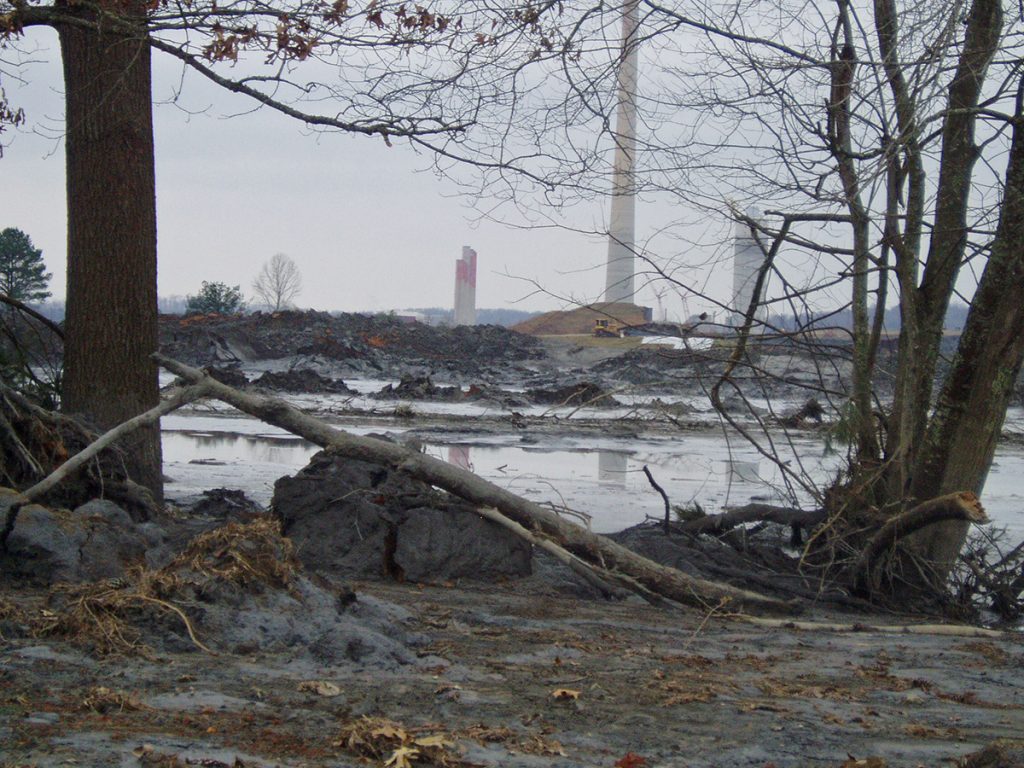Cleaning Up Coal Ash
For well over a century, power plants across the country have burned coal to generate electricity. And for just as long, leftover coal ash has been dumped in open, unlined pits near the power plant, usually located on a river or lake. Every year, U.S. power plants produce 130 million tons of coal ash, which is the second largest waste stream in the country after municipal garbage.
Coal ash concentrates the toxic heavy metals found in coal, including arsenic, mercury, lead and selenium. Stored in unlined, wet impoundments, coal ash has been leaking these toxics into our groundwater and surface waters for years. Sometimes these impoundments collapse — with disastrous results.
Yet government regulations for coal ash management are either non-existent or sparse, and there is little enforcement of the regulations that do exist. In North Carolina, this lack of oversight — and the complicity between state regulators, elected officials and Duke Energy — came to a boiling point in February 2014 when one of Duke’s coal ash impoundments spilled 39 million tons of ash into the Dan River.
Citizens living near North Carolina’s 33 coal ash impoundments — all of which have leaked — have fought for transparency from Duke and the state, and for cleanup of the pollution that threatens their property value, health and family. Their actions forced this issue into the headlines of news networks and to the forefront of environmental justice conversations in the United States.
Appalachian Voices stood with these communities as we worked for years to compel Duke Energy and the N.C. Department of Environmental Quality to excavate coal ash from all the North Carolina sites and dispose of it either in lined, dry landfills, away from waterways, or by recycling it for concrete or other uses, provided it’s done in a manner that protects public health and the environment.
On Jan. 2, 2020, North Carolina announced a historic settlement with one of the state’s most powerful corporations and polluters, Duke Energy. The settlement requires Duke to move nearly 80 million tons of toxic coal ash at six of its power plants to properly lined landfills onsite or recycle it.

Learn information about specific coal ash impoundments in the South, including health threats and safety ratings:
Additional Resources
Fact sheets, videos, links to academic research, and more
Sign Up to Act
Help us protect the health of our communities and waterways.
Latest News
Crowdsourcing Southwest Virginia’s New Economy

North Carolina lawmakers put fracking first
Residents across North Carolina are looking to their local government officials to oppose fracking since pleas to decision makers in Raleigh have largely fallen on deaf ears. The town of Walnut Cove, N.C., and Rockingham County recently joined the small but growing list of localities where commissions of elected officials have passed anti-fracking moratoriums.
Appalachians Look to Branch Out from Coal-Based Economy
Contact: Adam Wells, Appalachian Voices, (276) 679-1691, adam@appvoices.org…
I heard it through the pipeline
From Virginia Gov. Terry McAuliffe’s perspective, it’s probably best to just keep a lid on what state officials say publicly about controversial natural gas pipelines proposed to cut through the state. But among opponents of the pipelines, the administration’s actions are only deepening skepticism of the governor and his relationship with the projects’ primary backers.
Pro-solar group gets on Duke Energy’s bad side
Duke Energy wants to smack down NC WARN for setting up a experimental solar project on the rooftop of a Greensboro church and testing a law prohibiting third-party electricity sales in North Carolina. The company is not helping its reputation for quashing clean energy efforts that aren’t its own.
Settlement in Virginia Coal Pollution Case to Result in Cleaner Water
Contact: Ricky Junquera, Sierra Club, 202-625-2392, ricky.junquera@sierraclub.org Erin…








